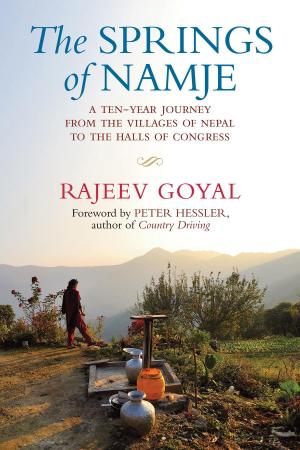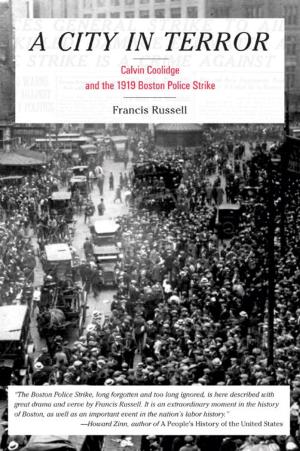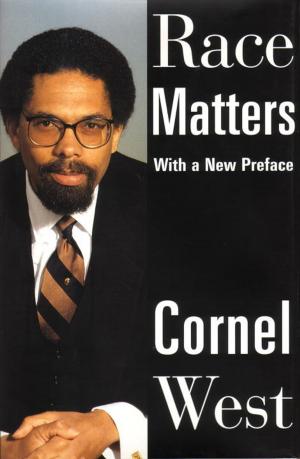The Princess and the Prophet
The Secret History of Magic, Race, and Moorish Muslims in America
Nonfiction, Religion & Spirituality, Inspiration & Meditation, Mysticism, Social & Cultural Studies, Social Science, Cultural Studies, African-American Studies, History, Americas, United States, 20th Century| Author: | Jacob S. Dorman | ISBN: | 9780807067482 |
| Publisher: | Beacon Press | Publication: | March 3, 2020 |
| Imprint: | Beacon Press | Language: | English |
| Author: | Jacob S. Dorman |
| ISBN: | 9780807067482 |
| Publisher: | Beacon Press |
| Publication: | March 3, 2020 |
| Imprint: | Beacon Press |
| Language: | English |
How the circuses, dance halls, and midways of the Gilded Age provided the cultural ferment and freedom that led to the creation of the Black Muslim movement in America.
Beyond the customary narratives of Gilded Age America lies a world of circuses, Wild West shows, and midways populated by Arabian acrobats and equestrians, "Hindoo" magicians, Muslim fakirs, Oriental hootchie-cootchie dancers, and the African Americans who took on these exotic identities.
The Princess and the Prophet tells the story of the man who, amidst the cultural ferment of this little-known world, discovered a greater measure of freedom and dignity and a rebuttal to the racism and parochialism of white America in Islam. He renamed himself "Prophet Noble Drew Ali," and founded the predecessor of the Nation of Islam, the Moorish Science Temple of America, in 1925.
Overturning the received wisdom that the prophet was born on the east coast, Jacob S. Dorman has discovered that Noble Drew Ali was born Walter Brister in Kentucky. Brister was a prominent child coronet player and bandleader, in fact the first Black child star on Broadway. After outgrowing that role, he renamed himself Armmah Sotanki, and performed as a "Hindoo magician," while his wife, Princess Sotanki, was a famous dancer and entertainer in her own right who captivated audiences as "the biggest act in colored vaudeville," first as a lion tamer, and then as a snake-handling Oriental dancer and magician. With an array of profitable businesses, their "Moors" built a nationwide following of at least 7,000 dues-paying members, swung Chicago elections, and embedded themselves in Chicago's dominant Republican political machine at the height of Prohibition racketeering, only to see their sect descend into infighting in 1929 that likely claimed the prophet's life.
Delving into new archives and uncovering fascinating biographical narratives, secret Islamic rituals, and hidden identities, Jacob S. Dorman explains why some Blacks came to see Islam as a global antiracist movement uniquely suited to people of African descent in an era of lynching, segregation, European imperialism, and race riots. The Princess and Prophet also reveals that cultures grow as much from imagination as inheritance, and that breaking down the artificial silos around various racial and religious cultures helps to understand not only America's hidden past, but also its polycultural present.
How the circuses, dance halls, and midways of the Gilded Age provided the cultural ferment and freedom that led to the creation of the Black Muslim movement in America.
Beyond the customary narratives of Gilded Age America lies a world of circuses, Wild West shows, and midways populated by Arabian acrobats and equestrians, "Hindoo" magicians, Muslim fakirs, Oriental hootchie-cootchie dancers, and the African Americans who took on these exotic identities.
The Princess and the Prophet tells the story of the man who, amidst the cultural ferment of this little-known world, discovered a greater measure of freedom and dignity and a rebuttal to the racism and parochialism of white America in Islam. He renamed himself "Prophet Noble Drew Ali," and founded the predecessor of the Nation of Islam, the Moorish Science Temple of America, in 1925.
Overturning the received wisdom that the prophet was born on the east coast, Jacob S. Dorman has discovered that Noble Drew Ali was born Walter Brister in Kentucky. Brister was a prominent child coronet player and bandleader, in fact the first Black child star on Broadway. After outgrowing that role, he renamed himself Armmah Sotanki, and performed as a "Hindoo magician," while his wife, Princess Sotanki, was a famous dancer and entertainer in her own right who captivated audiences as "the biggest act in colored vaudeville," first as a lion tamer, and then as a snake-handling Oriental dancer and magician. With an array of profitable businesses, their "Moors" built a nationwide following of at least 7,000 dues-paying members, swung Chicago elections, and embedded themselves in Chicago's dominant Republican political machine at the height of Prohibition racketeering, only to see their sect descend into infighting in 1929 that likely claimed the prophet's life.
Delving into new archives and uncovering fascinating biographical narratives, secret Islamic rituals, and hidden identities, Jacob S. Dorman explains why some Blacks came to see Islam as a global antiracist movement uniquely suited to people of African descent in an era of lynching, segregation, European imperialism, and race riots. The Princess and Prophet also reveals that cultures grow as much from imagination as inheritance, and that breaking down the artificial silos around various racial and religious cultures helps to understand not only America's hidden past, but also its polycultural present.















